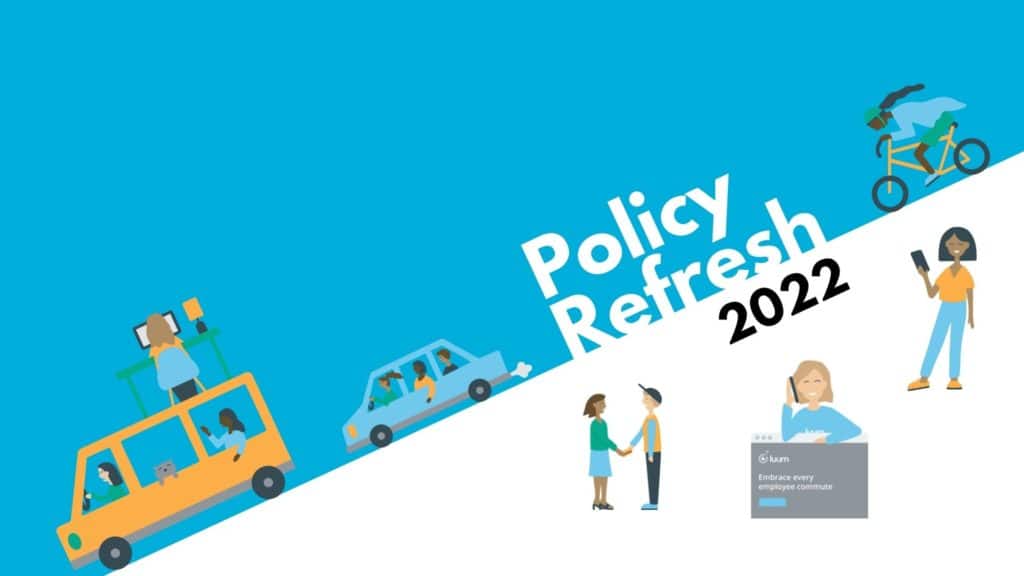OHSU: FROM METICULOUS PLANNING TO BOLD ACTION
How Oregon Health and Science University took their mission to heart and revitalized OHSU’s commute program with the right blend of technology, tools and policies.
One of Portland’s largest employers,
Oregon Health and Science University (OHSU), is a world-class public academic health center that delivers excellence in education, research, clinical practice and community service. Putting their multi-faceted mission into practice has been their operating telos from day one. And with OHSU’s growth, making that happen – day in and day out – has not been without its challenges.
When OHSU discovered that it had a parking problem, they sought – true to their DNA – solutions grounded in data and research. Stakeholders tasked with solving their parking predicament also understood that every commute decision they made would be more than a simple exercise in supply and demand—these decisions would be inextricably tied to the employee and student experience. However, OHSU, guided by its north star, remained vigilant in its focus on excellence in education, research and scholarship, clinical practice and community service – which far outweighed sinking $150,000,000 into building new parking garages. Fully committed to serving patients first, OHSU has worked tirelessly at the nexus of city regulations, congestion problems at Marquam Hill and employee experience to ensure that its commitments are being met.
Shift to Daily Parking
Ostensibly contentious, the shift to charging for daily parking has been more of a psychological battle for many drive-alone parkers. And OHSU empathizes with their objections, while implementing policies and programs that best serve their 19,000-plus employees, students and contractors. Interestingly, many who park are actually paying less per month but feel they are paying more simply because the charges are coming across in one-off, daily payments rather than the traditional per pay period charges. The data is speaking to incremental change as the average pay period cost ranges from $60 – 100, which translates to driving less than 10 days per pay period. This is the sunken cost theory hard at work.
What’s more, OHSU has used any opposition to daily parking charges to introduce their enterprise carpooling solution – Scoop. Scoop is integrated with Luum, and if employees carpool just one day a week, they can make up any differences in parking costs – percieved or real. You still drive your car, but you pick someone up on the way. OHSU has a goal to increase average daily carpool trips by 20% in 2020. Shifting to daily parking charges has opened the door to behavior change since employees now think daily about their commute choice – its cost and benefit.
Looking forward, OHSU is expanding their daily parking model to non-gated facilities. Similar to many universities, OHSU’s campus is riddled with disparate surface parking lots. Together, OHSU, Luum, and Dero Zap are piloting an RFID parking revenue solution for these surface lots. This, in conjunction with license plate recognition (LPR) for enforcement purposes, is providing incredible value to the OHSU transportation team thanks to the most accurate and complete parking data possible.
As if this wasn’t enough, OHSU takes it one step further. Luum accommodates tiered parking models – meaning OHSU has priced the daily parking at $12 a day for the first 8 weekday parking events in the pay period, but then the cost jumps to $15 for the 9th and 10th parking event. Under this pricing structure, individuals who are able to commute to work one day a week without driving alone would actually see a slight reduction in the parking costs ($96 instead of the previous flat rate of $99.50 per pay period), but are discouraged from driving every day due to the increased cost on the last two days.
Guaranteed Ride Home
OHSU’s Guaranteed Ride Home (GRH) has been greatly enhanced by taking advantage of Luum’s GRH tool, integrated with Lyft. The previous model was not widely promoted due to the cumbersome and inefficient nature of the program: Requiring an employee to come to the Transportation and Parking Office (which may be nowhere near the employees worksite) get a physical cab voucher, call and wait for a cab. Next, came the onerous task of trying to find the cab once it arrived on the large OHSU campus that has one physical address. All in all, the former GRH program hovered around a mere 20 rides per year, on average.
Since implementing Luum – and setting up GRH integration with Lyft – OHSU reports over 100 rides per month. With each employee receiving three rides per year under the refreshed GRH policy, many are more apt to take alternative modes to work knowing that they can easily grab a Lyft should some emergency arise. For employers looking to nudge the needle on their commute benefit and TDM programs, GRH is a great place to start.
When we began the planning process it became evident, early on, that the kind of progressive policy-making we wanted to put into action required software capable of managing our robust commuter benefits program. Partnering with Luum has set us up for long-term success in order to reach our TDM goals.
–Brett Dodson, Director of Tram, Transportation, and Parking at OHSU
To 2027 and Beyond…
OHSU has gone to painstaking lengths in putting together a TDM plan for reaching their goal of hitting a 30% drive-alone rate by the year 2027. Their approach, with Luum, has been laboratory-like in its rollout—to begin collecting data and measuring results in order to leverage commute data for future funding and decision-making.
Earlier this year, they were able to continue balancing the drive-alone disincentive that is daily parking charges with a transit bonus. Not only did this add to employee delight but it saw greater engagement with Luum as more transit trips were logged.
Later this year, OHSU will begin AB testing with different messaging to different groups of people to see what messaging leads to behavior change. How do you get an SOV driver to carpool? How do get a transit rider to try biking? OHSU knows that if they can crack the messaging, they can transform their culture to one that is deep in alternative, active, and intentional commuting.
More In the Luumlight
HR Dive: Enterprise employers navigate the hybrid commute
Our annual virtual conference, Luuminary22, was held on July 20th. We gathered a wonderful group of leaders to discuss the hottest topics of 2022: including…
Your hybrid workforce doesn’t need commuter benefits. They need mobility benefits.
Life is not the same as it once was. The workforce is continually changing, and so are employees’ needs, causing a rethink in the ways…
Return to Better: Commuter Benefit Policies For 2022 and Beyond
Daily flexibility and choice will keep your commuters safe, happy, and productive. Whether your workforce has been commuting throughout the pandemic or returning to office…



